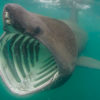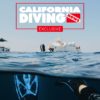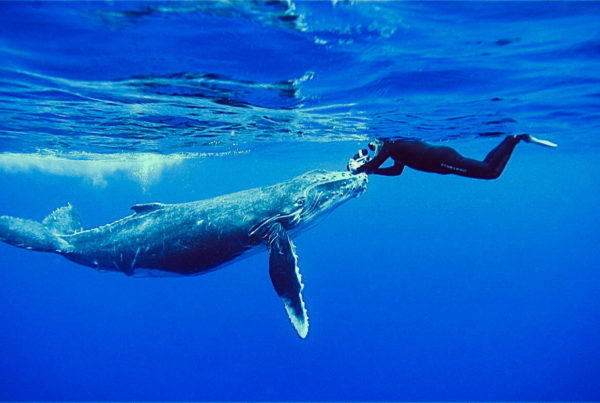Good nature photographers are careful observers. Try to study the creatures you encounter when you dive. Watch how your subjects behave. Knowing how a critter acts (and responds to your presence) will help in capturing good images. Observing an animal provides clues on what to show in your photographs and how to position yourself to show it. The best nature photography shows animals doing and living—it’s “animated.” Place a creature in its world, living its life, and your underwater photography will come alive because it includes the life of your subjects.
Before moving from one place on the dive site to the next, look around and look ahead. Try to observe a potential subject at a distance before moving closer, then approach non-directly and low to the bottom. With lots of animals, it’s best to avoid eye contact. You’ll need to learn the trick of getting close without chasing your subject away. My technique is to dive in slow motion. Besides making your bottle last, moving and breathing very slowly is interpreted as less threatening by most animals. Many will ignore creatures who appear to be ignoring them.
When you spot a skittish (but stationary) subject, move away from it, and plan how to approach. Look for cover—something to obscure the animal’s view of you so you can position your lighting and plan your shot. When you’re ready to go, try to keep under some cover as you move closer. Take a shooting position, but face a bit to the side as you approach. The idea is to look like something floating in the swell. Slowly maneuver closer, a little at a time. I shoot from farther away at first, and then move closer. This technique won’t work on fast swimmers who dart away with the first hint of your bubbles, but it works wonders on the majority of animals.
Finding accessible subjects is an inherent difficulty in underwater nature photography. Some animals flee, others are in difficult positions to photograph. As you gain experience, you’ll tend to move from easier to harder targets. A good way to start is to pick out subjects based on your chances for getting good images. I’ve learned to pick my battles. Unless the species is new to me or rare, I’ll decide if it’s a good opportunity before I take images. (On most dives you find numerous possibilities; might as well pick good targets.) Once I decide to shoot, I do everything I can to come back with a good shot. I’ll take lots of images, try multiple lighting angles, and shoot from as many perspectives that make sense and the subject will allow. I bracket my exposures, and because I shoot digital I’m able check good focus/exposure.
A good rule of thumb is to frame your subject at eye level. The perspective you choose will communicate a lot about the animal, particularly with macro subjects. I try to shoot from eye level, or below, looking up, and from as close as possible. Another good rule of thumb is to have your subject take up at least 25 percent of the frame. Of course, these are guidelines: no rule is absolute. There are always exceptions, and sometimes you have to take the shot you find. Keep shooting. The perfect image may be waiting for you on your next dive!










